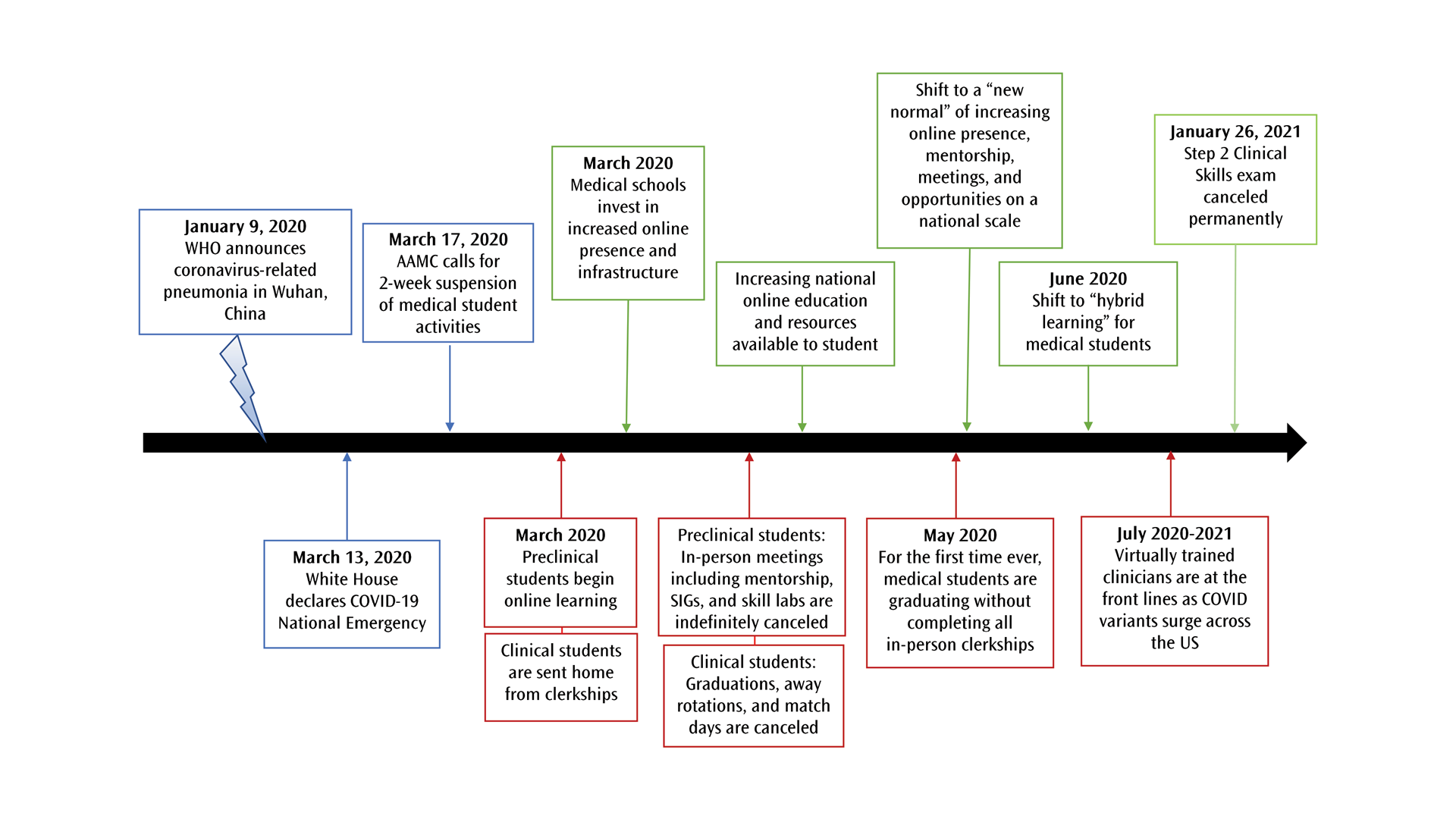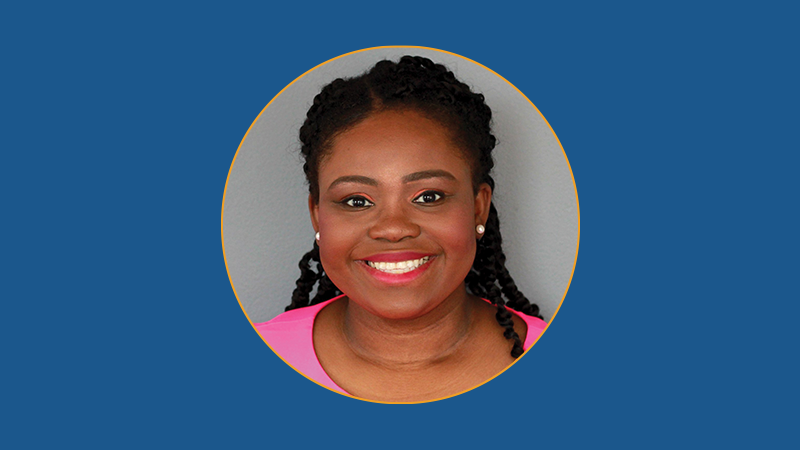During the pandemic a rapid shift to exclusively online learning during preclinical years occurred to comply with social distancing mandates. Clerkships were restructured to minimize contact with patients to reduce chances of exposure to COVID-19. Many of the traditional panels and workshops designed to introduce medical students to the field of surgery were transformed into virtual meetings or recordings. Pandemic-related alterations to these formative experiences have changed how students are exposed to the field of surgery, modified how professional identity is formed, and transformed how medical students transition to surgical residency. This article explores some of the ways the COVID-19 pandemic has affected undergraduate medical education and medical students as they progress toward surgical careers.
Impact on Preclinical Medical Education
Traditionally, during the first 2 years of medical school, the focus is on a more structured learning style, including classes, lectures, and regular examinations, with little patient-forward care. Many students use the preclinical time to learn more about each specialty, meet potential mentors, gain peers and supporters, and focus on the transition to becoming a physician learner. At the start of the pandemic in March 2020, the Association of American Medical Colleges (AAMC) declared medical students “non-essential workers.” As a result, medical students had limited opportunities to participate in direct patient care.1 Many schools also transitioned to virtual learning platforms for preclinical students to comply with social distancing mandates. This significantly restricted hands-on anatomic learning, interactions with peers and faculty, and opportunities for clinical experience.
Virtual learning platforms have been shown to have the potential to improve knowledge outcomes compared with conventional learning in medical education.6 However, for tactile specialties such as surgery, virtual platforms can never truly replicate direct experience. As an example, for students interested in surgical subspecialties using anatomic dissection, one of the first rites of passage of medical school, may be the inciting event that sparks an interest in surgery.7 Regarded by many as their first patient, the cadaveric dissection provides the opportunity to appreciate the body and all its interconnected parts in three dimensions. Prior research has shown that participation in a gross anatomy course that includes cadaveric dissection may significantly increase student interest in pursuing a surgical career.7
During the pandemic, many schools transitioned from cadaveric dissection to prosection, often via virtual learning tools, decreasing opportunities for hands-on learning.8 It is unclear if these changes will persist and how this change will affect medical student interest in surgery as a potential career.
The pandemic also negatively affected shadowing, mentorship, and networking opportunities in the preclinical years. Institutional mandates resulted in fewer shadowing opportunities for preclerkship students and decreased early exposure to specialties, including surgical specialties.9 At many institutions, public health guidelines also prohibited students from hosting in-person events. Surgery interest groups frequently were restricted to hosting virtual events. Suturing workshops and other hands-on events that could not transition to a virtual format were canceled. For surgical subspecialties in particular, these early opportunities have been shown to significantly increase student interest in surgery as a career.10,11
Conferences, which traditionally offered students a platform to present their work and engage with others in their fields of interest, either transitioned to an online format or were canceled during the height of the pandemic. Many surgical disciplines engage medical students through travel scholarships and trainee-specific programs.12 However, during the pandemic, these programs no longer offered the same immersive experiences and access to mentorship initially intended to attract students to the field. The lack of in-person research and conference experiences during the pandemic further limited the quantity and quality of opportunities for early medical students to engage with the broader surgical community.
Without these early opportunities to find surgical mentors and role models, it will be important to study the impact this phenomenon may have on the number of future students pursuing surgical subspecialties.





